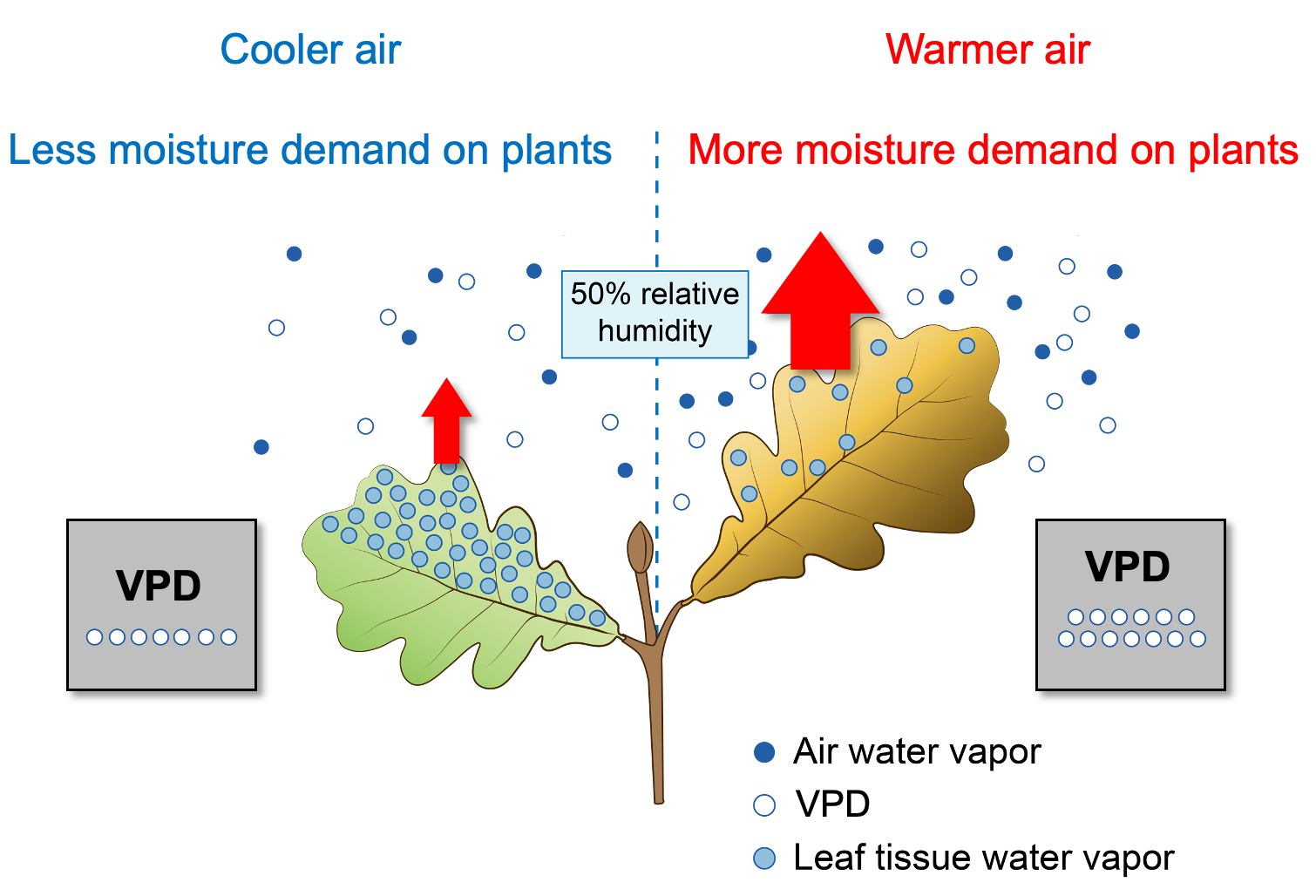VPDrought is the First Experiment Worldwide to Investigate the Influence of Air Dryness and Soil Drought in a Mature Natural Forest
“VPDrought” represents a novel approach to disentangling the effects of air dryness and soil drought. It is the first experiment worldwide to investigate the influence of air dryness and soil drought in a mature natural forest. The facility commenced full operational status in the early summer of 2024. The objective is to elucidate the processes influenced by air dryness (specifically vapor pressure deficit, VPD) and soil drought. The research will be conducted at the cellular, tree, and ecosystem levels. The experiment is located at the Pfynwald research platform, a pivotal long-term monitoring and experimental irrigation site in a pine forest in Valais, where the effects of soil drought have been studied since 2003.

Figure 1. Drying effect of warmer air on plants and soils. (Source: after USGCRP, 2018)
The long-term experimental research site Pfynwald is part of the SwissForestLab and the eLTER research infrastructures. The site benefits from extensive data series, including more than 120 parameters collected across multiple temporal and spatial scales. The VPDrought experiment is a collaborative endeavour led by WSL (PI, Marcus Schaub) in conjunction with the EPFL (Co-Pi, Charlotte Grossiord), the University of Basel and ETHZ.
The Pfynwald research platform, encompassing approximately 800 forest pines across 1.2 hectares, is divided into eight plots of 1,000 m² each. Four plots receive the natural rainfall of about 600 mm per year, serving as control plots. The remaining four plots are irrigated to double the average annual rainfall to around 1,200 mm per year.
Additionally, roofs on six of the control plots halve the precipitation to approximately 300 mm per year, with the collected water being drained into the nearby water channel.
By each of the six VPD manipulation scaffolds, 3-5 trees are exposed to a reduced vapor pressure deficit (VPD): they face a nozzle field which releases water under a 70 to 150 bar pressure from April to September. This dry misting only takes places during a main wind direction of 235°-325° in order to prevent the VPD from being reduced in the neighbouring control trees as well.
In addition, roofs in six plots reduce precipitation by approx. 50% and drain the collected water into the water channel.
The VPDrought project was implemented in 2024 and will run until 2028.
Meet the team with project lead Dr. Marcus Schaub!
Visit the VPDrought website and learn more!
